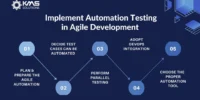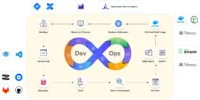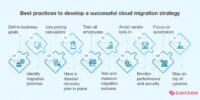Agile software development has become a cornerstone of modern software engineering, emphasizing flexibility, collaboration, and customer satisfaction. In this guide, we’ll explore quick tips to effectively implement Agile methodologies, turning principles into action for successful and adaptive software development.
1. Embrace the Agile Mindset
Agile is not just a set of processes; it’s a mindset. Embrace the core values of Agile, as outlined in the Agile Manifesto. Prioritize individuals and interactions, working software, customer collaboration, and responding to change. Cultivate a culture that values adaptability and continuous improvement.
2. Break Down Work into User Stories
User stories are the building blocks of Agile development. Break down features and requirements into small, manageable user stories that deliver tangible value. User stories ensure that development efforts are focused on customer needs and provide a clear direction for development teams.
3. Prioritize Backlog Items with a Product Owner
Work closely with a Product Owner to prioritize items in the backlog. The Product Owner represents the customer’s voice and ensures that the most valuable features are addressed first. Regular collaboration with the Product Owner helps the team understand customer priorities and expectations.
4. Hold Regular and Time-Boxed Sprint Planning
Conduct sprint planning sessions at the beginning of each sprint to determine which backlog items will be addressed. Keep these sessions time-boxed to ensure efficiency. Establish a clear goal for each sprint and discuss the scope and objectives with the entire team to foster shared understanding.
5. Foster Open Communication in Daily Stand-Ups
Hold daily stand-up meetings to promote open communication within the team. During these short and focused sessions, team members share progress updates, discuss challenges, and identify impediments. Daily stand-ups enhance collaboration and keep everyone informed about the project’s status.
6. Regularly Review and Adapt Processes
Agile places a strong emphasis on inspection and adaptation. Conduct regular sprint reviews to showcase completed work to stakeholders. Additionally, hold sprint retrospectives to reflect on what went well, what could be improved, and implement changes to enhance team performance and collaboration.
7. Encourage Cross-Functional Collaboration
Foster collaboration among cross-functional team members, including developers, testers, designers, and business analysts. Breaking down silos ensures that different perspectives contribute to problem-solving and that the entire team takes collective ownership of the product’s success.
8. Implement Continuous Integration and Continuous Deployment (CI/CD)
Automate your development pipeline with CI/CD practices. Continuous Integration ensures that code changes are regularly integrated and tested, while Continuous Deployment automates the release process. These practices improve code quality, reduce manual errors, and accelerate the delivery of software.
9. Emphasize Test-Driven Development (TDD)
Adopt Test-Driven Development (TDD) to enhance code quality and maintainability. With TDD, write tests before writing the actual code. This approach ensures that the code meets the specified requirements and allows for easier maintenance and refactoring in the future.
10. Celebrate Achievements with Regular Demos
Organize regular demos to showcase completed features and celebrate achievements with stakeholders. Demos provide an opportunity for feedback, validate that development aligns with customer expectations, and reinforce the sense of accomplishment within the team.
Conclusion
Agile in action is about embodying the principles and values of Agile methodologies throughout the entire software development lifecycle. By embracing the Agile mindset, breaking down work into user stories, prioritizing backlog items with a Product Owner, holding regular sprint planning and stand-up meetings, reviewing and adapting processes, encouraging cross-functional collaboration, implementing CI/CD, emphasizing TDD, and celebrating achievements with regular demos, you can harness the power of Agile for adaptive, customer-focused, and successful software development.








